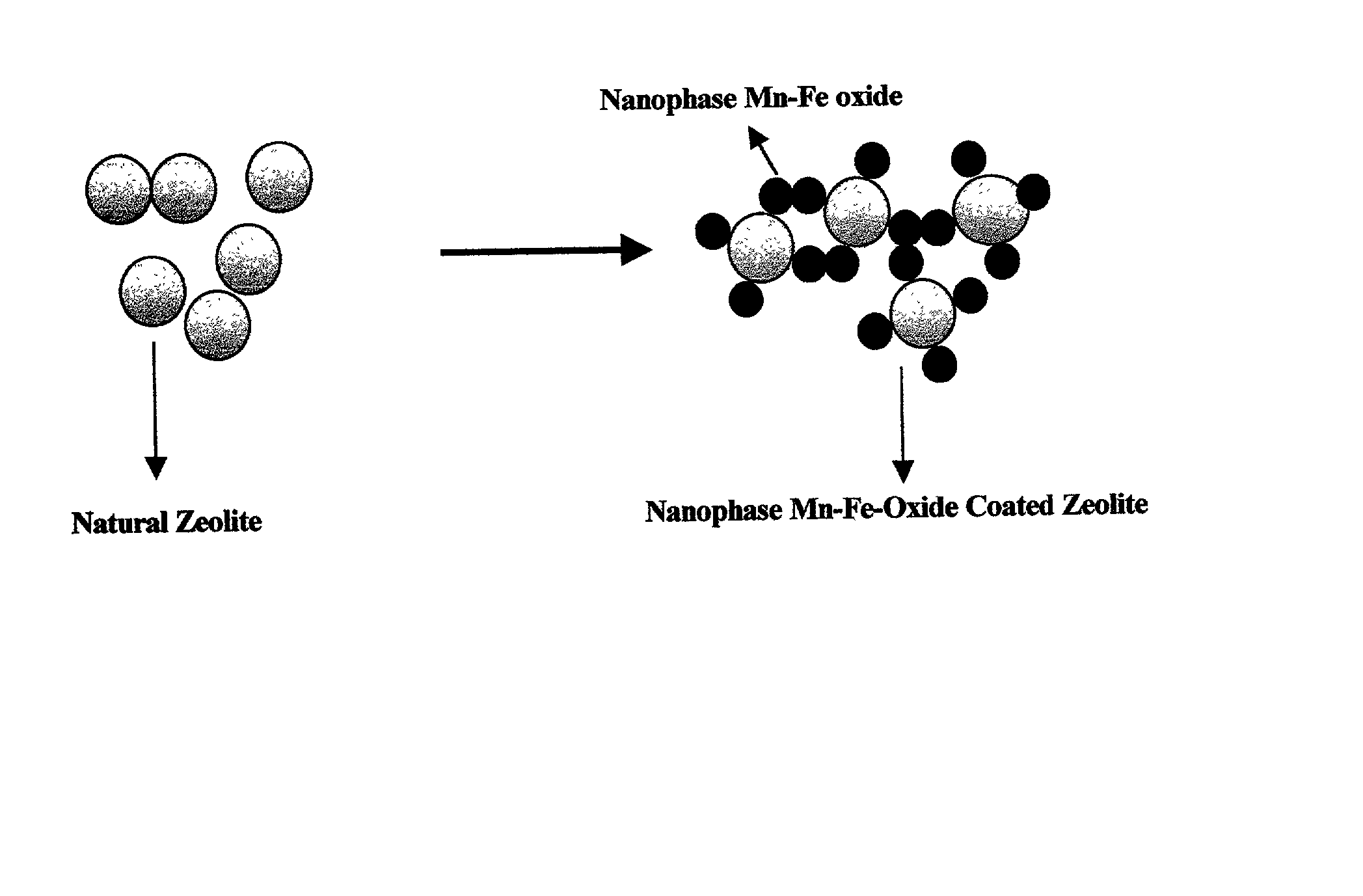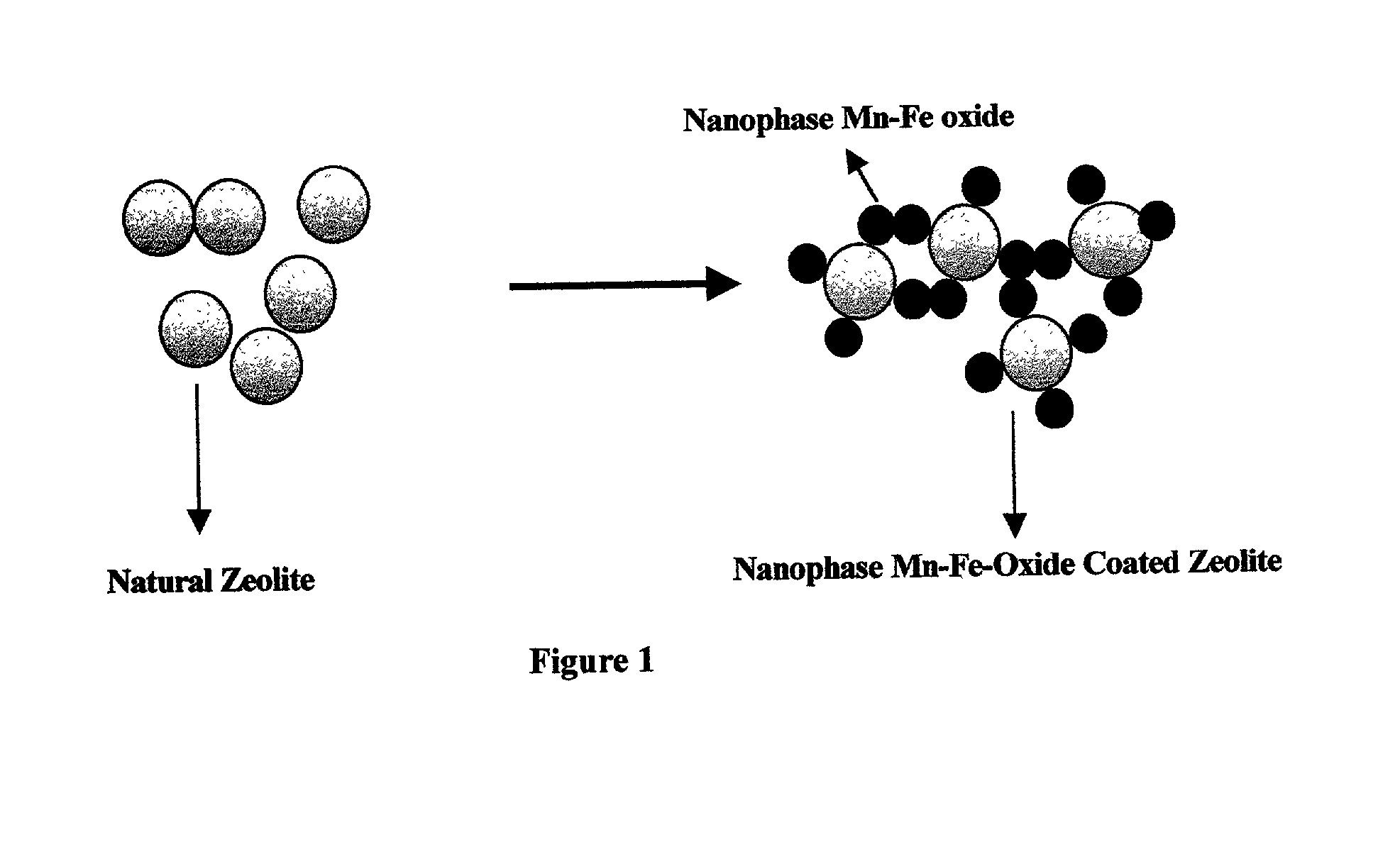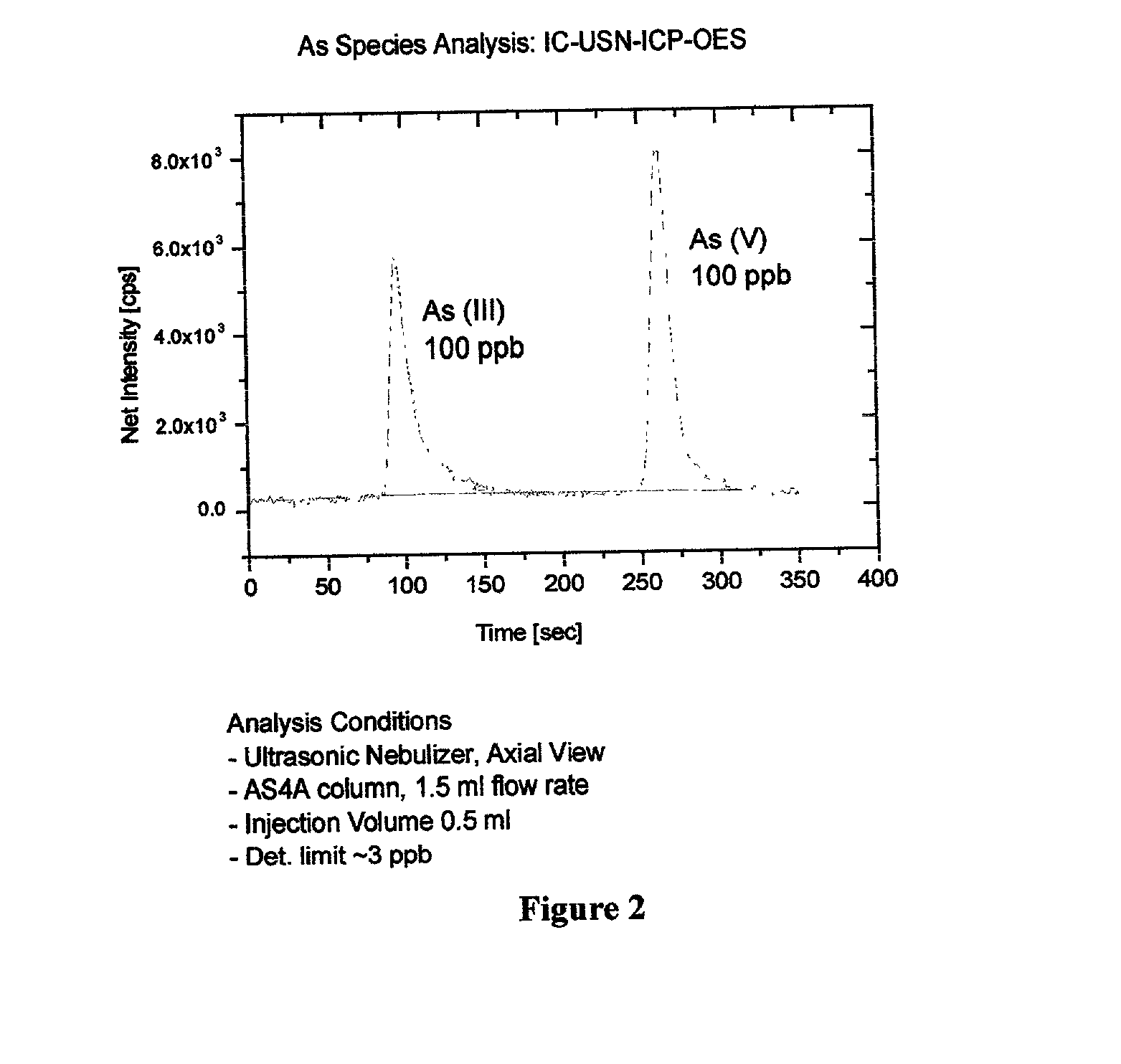Absorbent for arsenic species and method of treating arsenic-contaminated waters
- Summary
- Abstract
- Description
- Claims
- Application Information
AI Technical Summary
Benefits of technology
Problems solved by technology
Method used
Image
Examples
example 2
[0036] Si-Ferrihydrite with Si / Fe Molar Ratio of 0.04
[0037] To a 1000 mL beaker containing 100 mL of 1 M FeCl.sub.3, 100 mL of 0.04 M Na.sub.2SiO.sub.3 was added and solutions mixed using a magnetic stirrer. The pH of the solution was raised to 8.2, which resulted in formation of precipitate. The precipitate was incubated for a day; subsequently, the sample was centrifuged and dialyzed to remove excess of salts. The freeze-dried sample was used for characterization.
example 3
[0038] Si-Free Birnessite
[0039] To a 1000-mL beaker containing 200 mL of 0.5 M MnSO.sub.4, 250 mL of 5.2 M NaOH was added rapidly and the resulting black precipitate was agitated using a magnetic stirrer. Oxygen was immediately passed through the precipitate at a rate of 2 L min.sup.-1 using a fritted glass tube to produce a stream of small bubbles. After 5 h, the black suspension was centrifuged at 10,000 rpm for 30 min. The first supernatant was saved to determine the NaOH concentration and / or its consumption. The sample was further washed with deionized water five times and dialyzed. The freeze-dried sample was used for characterization.
example 4
[0040] Si-Birnessite with Si / Mn Molar Ratio Ranging from 0.32 to 0.68
[0041] Silica was added to the birnessite synthesis, to make it poorly crystalline so that high surface area would provide more interaction of Mn(II) with As(III) resulting in higher oxidation of the latter ions. To a 1000-mL beaker containing 200 mL of 0.5 M MnSO.sub.4, 250 mL of 5.2 M NaOH containing appropriate amount of dissolved Na.sub.2SO.sub.3.5H.sub.2-O was added rapidly to achieve the desired Si / Mn molar ratio and the resulting black precipitate was agitated using a magnetic stirrer. Oxygen was immediately passed through the precipitate at a rate of 2 L min.sup.-1 using a fritted glass tube to produce a stream of small bubbles. After 5 h, the black suspension was centrifuged at 10,000 rpm for 30 min. The first supernatant was saved to determine the NaOH concentration and / or its consumption. The sample was further washed with deionized water five times and dialyzed. The freeze-dried sample was used for char...
PUM
| Property | Measurement | Unit |
|---|---|---|
| Fraction | aaaaa | aaaaa |
| Fraction | aaaaa | aaaaa |
| Fraction | aaaaa | aaaaa |
Abstract
Description
Claims
Application Information
 Login to View More
Login to View More - R&D
- Intellectual Property
- Life Sciences
- Materials
- Tech Scout
- Unparalleled Data Quality
- Higher Quality Content
- 60% Fewer Hallucinations
Browse by: Latest US Patents, China's latest patents, Technical Efficacy Thesaurus, Application Domain, Technology Topic, Popular Technical Reports.
© 2025 PatSnap. All rights reserved.Legal|Privacy policy|Modern Slavery Act Transparency Statement|Sitemap|About US| Contact US: help@patsnap.com



